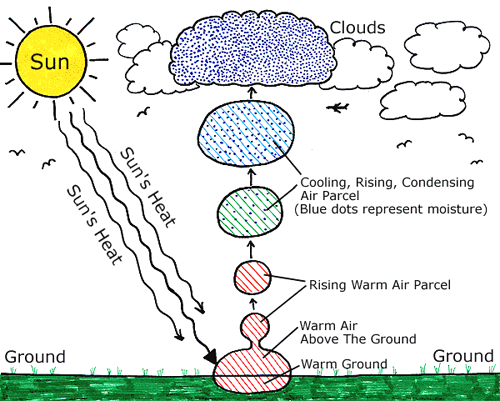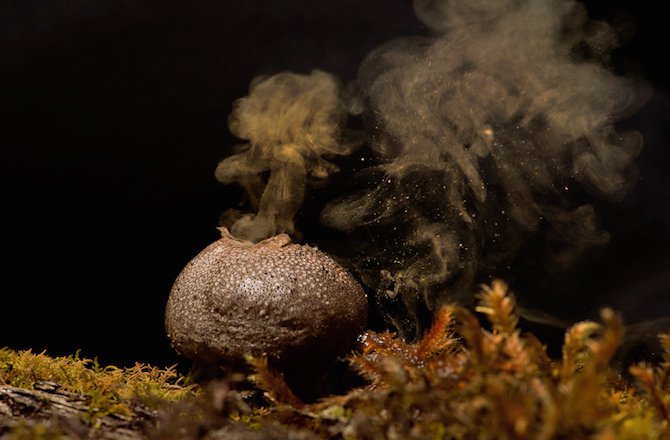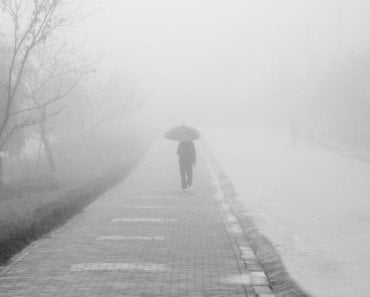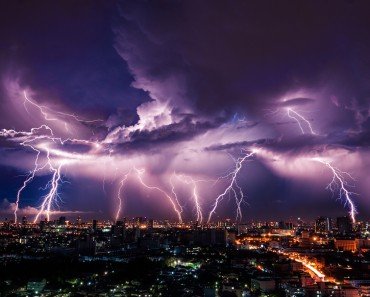Table of Contents (click to expand)
Mushrooms make it rain by releasing spores into the atmosphere. These spores act as particulates that support water condensation, which in turn forms clouds.
The kingdom ‘Fungi’ is a group of enigmatic organisms. They can’t be classified into mainstream species of plants or animals, but have somehow still managed to exist for more than 700 million years on Earth. Due to their ambivalent position between the Plant and Animal kingdoms, most species of Fungi remain a mystery to the scientific community. In fact, the largest living organism in the world is a fungus! This humongous fungus located in Oregon, USA occupies almost 2,400 acres (965 hectares) of soil, covering an area as large as 1500 football fields.

Basically, fungi are gifts that keep on giving for scientific puzzle enthusiasts. Interestingly, scientists have found that they also possess the power to control the weather! However, to understand how mushrooms stimulate the weather, we need to better understand exactly how weather changes occur.
Recommended Video for you:
How Are Clouds Formed?
We know that the atmosphere has water in the form of water vapor constantly floating around, which affects the humidity of an area. The molecules of water have an intrinsic ability to coalesce into larger groups. As these groups start getting bigger, they give rise to liquid water, which is manifested in the atmosphere in the form of water droplets. However, the speed at which the water vapor molecules vibrate prohibit them from easily forming groups. Only below a certain a temperature do the water vapor molecules slow down enough to allow the formation of water droplets.

The condensation of water molecules is helped along by the presence of small particles suspended in the atmosphere along with air. The particles act as the basic structure or nuclei on which water molecules can stick and easily coalesce. This process is called Cloud Seeding. Although “seeding” often describes human-engineered attempts to control the weather, clouds really do need condensation nuclei to form precipitation. Therefore, when the concentration of suspended particles in the air is high, it is easier to obtain water droplets. When the droplets increase to a sufficient number, they come together to form clouds. The concentration of water in the clouds continues to increase for a long time until the clouds can no longer support their own weight. This is when water in the form of rain falls down to the surface.
How Do Mushrooms Come Into The Picture?
The suspended particles responsible for Cloud Seeding are often biological in origin, such as bacteria, pollen, dry plant fragments and, most importantly, spores from mushrooms.
As you might know, mushrooms are the reproductive organs of fungi. Their main objective is to release as many ‘spores’ into their surroundings as physically possible. This is of utmost importance for their survival, because these spores populate the species.

A single mushroom can “catapult” up to 30,000 spores per second at speeds of up to 4mph. They need such high speeds to disperse the spores across the maximum distance possible. Mushrooms don’t just use the technique of forceful ejection to get the job done, but can also alter the moisture of the air around them. They are then able to whip up winds that blow away their spores and help them disperse. It’s been estimated that mushrooms release 50 million tons of spores into the atmosphere every year.

Sometimes, when the force of ejection of the spores is high enough, these spores are carried by the wind into the cloud-bearing layers of the atmosphere. They then act as particulates that support water condensation. Using an electron microscope, researchers were able to watch water from humid air attach itself to those same spores to create cloud-forming particulates. It is not like the mushroom spores are the only reason why clouds form, but they can certainly stimulate it.
How Effective Are The Spores?
In areas where the mushroom population is high, weather phenomena are very dependent on mushrooms’ ability to disperse spores into the atmosphere. The effect of spore ‘rainmakers’ is the efficient production of rain over forests, even during warmer months. Alternately, if climate change reduces rainfall in these rain forests, mushroom spore formation would drop and the water scarcity problem would get even worse!

This is especially interesting because we can now observe the complete circle between the responsibilities and the necessities of fungi. Most fungi are adapted to grow in humid and damp areas. The fact that they are highly responsible for rain in such areas just goes to show how well nature works when left alone.
Rainmaking fungi sounds like good news for the climate, but it’s not the full story of fungi’s effect on climate. Saprotrophic fungi decompose a variety of carbon sources, including petroleum, leaf litter, wood, and food products. This process converts carbon into carbon dioxide, which in turn fuels the effect of Global Warming. Therefore, the farming of fungi to induce rain in drought-stricken areas is not recommended by scientists.
Whatever the case, it’s clear that fungal spores are doing a lot more than we currently give them credit for. Next time you order pizza with mushroom just make sure that you’re indoors. Just kidding, get an umbrella…













